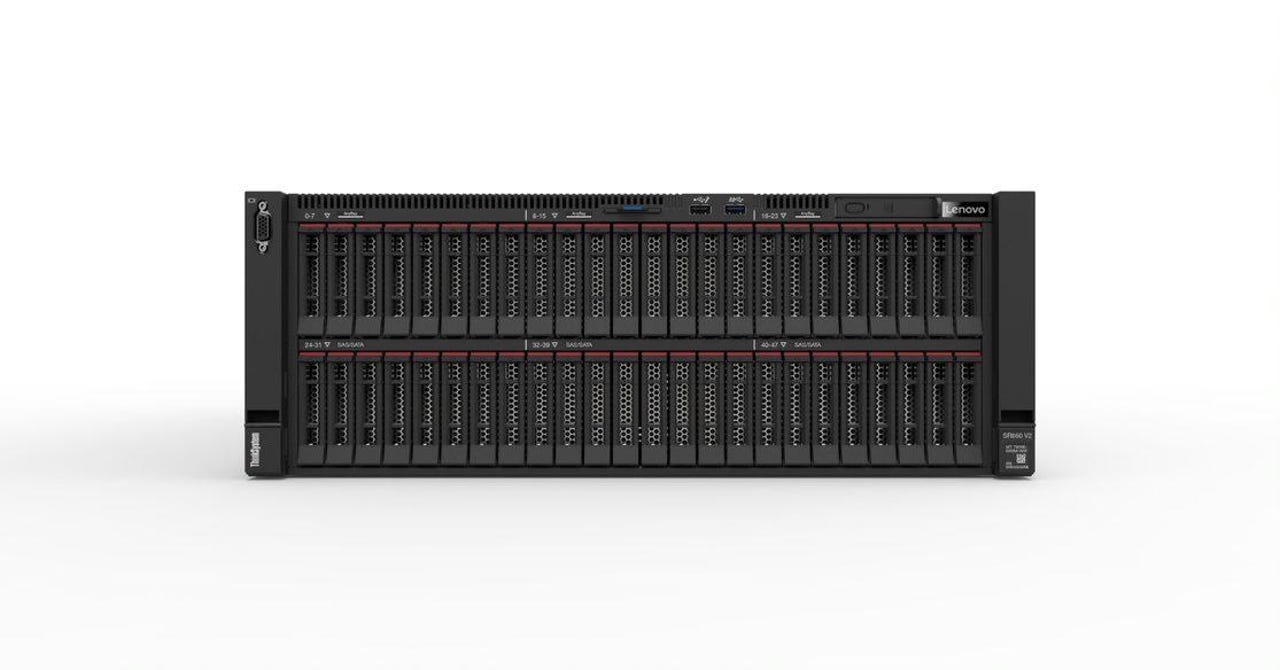Lenovo launches data center servers aimed at AI, analytics workloads


The Lenovo ThinkSystem SR860 V2 server.
Lenovo on Thursday launched two new data center servers aimed at supporting AI and analytics workloads. The ThinkSystem SR860 V2 and SR850 V2 servers feature the new third-generation Intel Xeon Scalable processors and offer support for the new Intel Optane persistent memory 200 series.
Primers
Also: Intel introduces Copper Lake processor, other additions to portfolio
Intel's new third-gen Xeon processors, debuted this week, come with built-in deep learning acceleration. The chip and the new Lenovo servers are designed to help organizations manage and analyze the huge volumes of data now regularly collected across industries. Coupled with SAP Data Intelligence, organizations can use the servers to tap into structured and unstructured data from multiple sources.
The ThinkSystem SR860 V2 server also offers GPU support, accommodating four double-wide 300W or eight single-wide GPUs.
Lenovo is also rolling out new remote deployment capabilities for the ThinkSystem DM7100 storage systems, which should improve cost efficiency and create less data center disruption. The DM7100 software includes integrated hybrid cloud data tiering and management, which helps organizations build backup as well as high-availability capabilities for analytic workloads.
Select configurations of the servers and the storage system are available through Lenovo TruScale, the pay-for-what-you-use data center offering.
About a year ago, Lenovo laid out ambitious plans to scale its six-year-old data center group (DCG). The segment still accounts for a relatively small portion of the company's revenues. In its most recent earnings report, for Lenovo's fourth quarter, the company reported server volume growth of 14% year over year. However, for the full fiscal year, the DCG saw overall revenue decline 8.7% year over year due to softer hyperscale demand and significant commodity price declines.